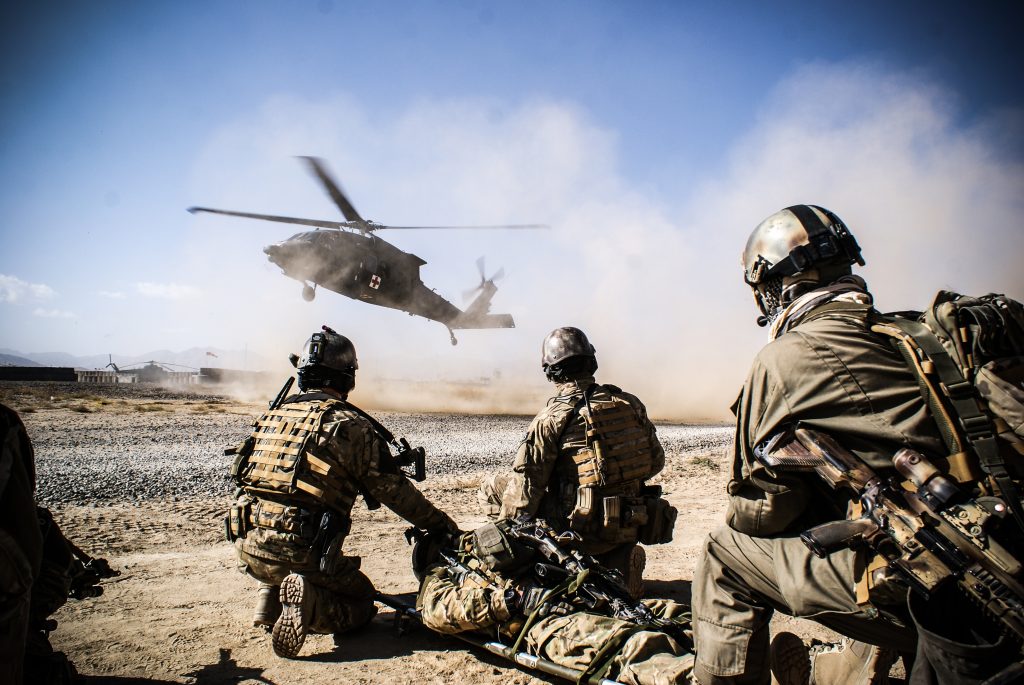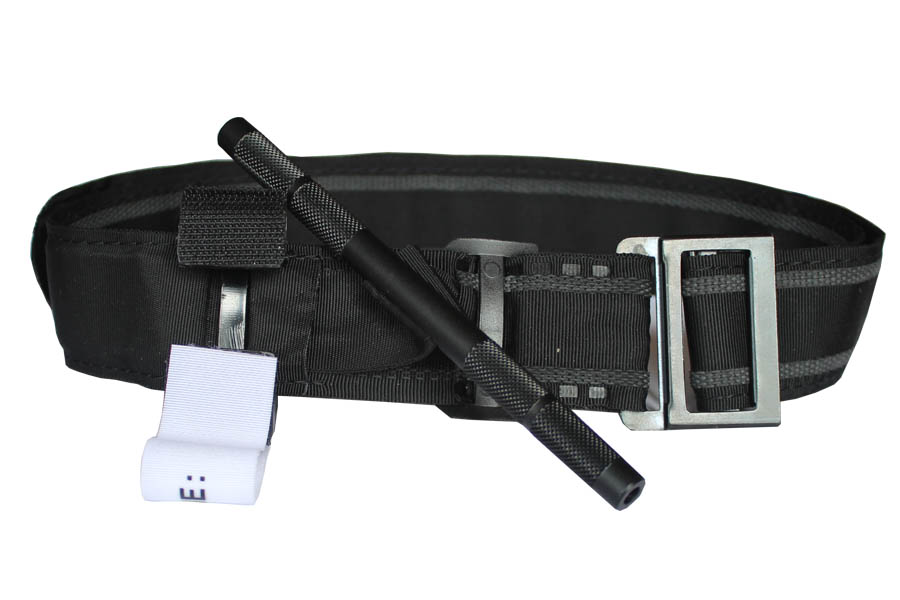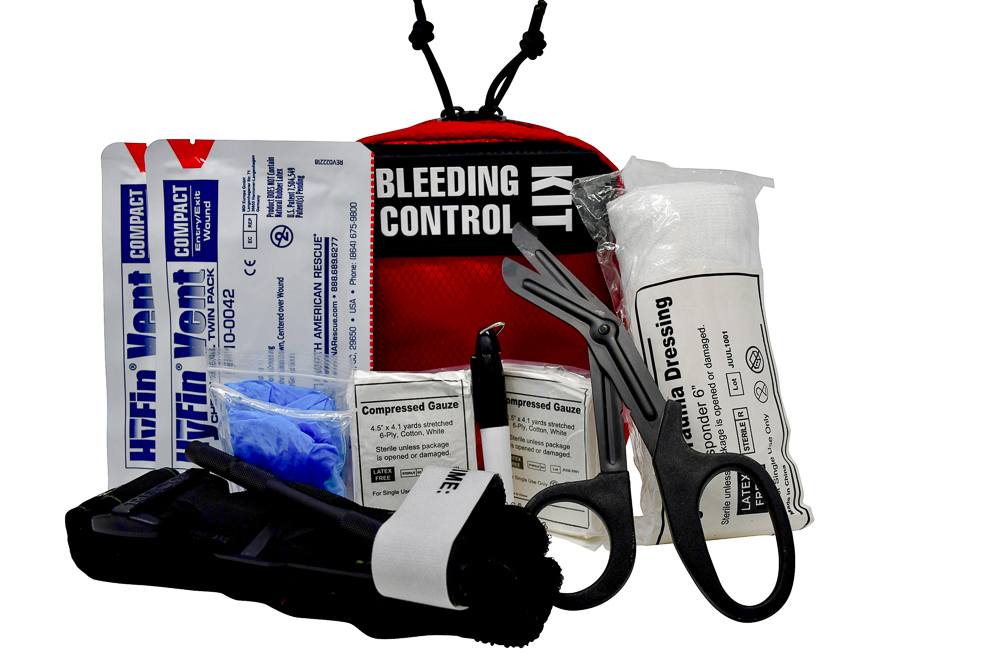Tactical Combat Casualty Care (TCCC) is developed by the U.S. Department of Defense Defense Health Agency (DHA) Joint Trauma System to teach evidence-based, life-saving techniques and strategies for providing the best trauma care on the battlefield.
The three goals of Tactical Combat Casualty Care (TCCC) are: • 1. Save preventable deaths • 2. Prevent additional casualties • 3. Complete the mission
TCCC is built around three definitive phases of casualty care:
•Care Under Fire
“Care under fire” is the care rendered by the Tactical Medic or Tactical Operator at the scene of the injury while still under effective hostile fire • Available medical equipment is limited to that carried by the medic or first responder in his/her aid bag
Tactical Field Care
“Tactical Field Care” is the care rendered by the medic once no longer under effective hostile fire • Also applies to situations in which an injury has occurred, but there has been no hostile fire • Available medical equipment still limited to that carried into the field by medical personnel • Time to evacuation may vary considerably
Breathing
Traumatic chest wall defects should be closed quickly with an occlusive dressing without regard to venting one side of the dressing • Also may use an vented chest seal or non vented chest seal.
Progressive respiratory distress in the presence of unilateral penetrating chest trauma should be considered tension pneumothorax • Tension pneumothoraxis the 2nd leading cause of preventable death on the battlefield • Cannot rely on typical signs such as shifting trachea (late sign and very difficult to appreciate) • Needle chest decompression is life-saving ( 14 gauge 3.25 inch catheter)
Any bleeding site not previously controlled should now be aggressively addressed. • Only the absolute minimum of clothing should be removed, although a thorough search for additional injuries must be performed.
•Once the tactical situation permits, a new tourniquet can be applied 2-3 inches above wound on bare skin. Distal pulse should be checked, If present, tighten tourniquet until distal pulse is absent • Initiate IV access
Apply directly to bleeding site and hold in place 2 minutes • If dressing is not effective in stopping bleeding after 4 minutes, remove original and apply a new dressing • Additional dressings cannot be applied over ineffective dressing • Pack wound with gauze (enough to fill cavity) • Apply a battle dressing/bandage to secure hemostatic dressing in place • If bleeding controlled, do not remove dressing
Splint fractures as circumstances allow while verifying pulse and prepare for evacuation (SAM SPLINT) • Continually reevaluate casualties for changes in condition while maintaining situational awareness • Consider Emergency Airway
•Tactical Casualty Evacuation Care (TACEVAC)
Tactical Evacuation” is the care rendered once the casualty has been picked up by evacuation vehicles • Additional medical personnel and equipment may have been pre-staged and available at this stage of casualty management
At some point in the operation the casualty will be evacuated • Time to evacuation may be quite variable from minutes to hours • The tactical medic may be among the casualties or otherwise debilitated • A MASS CALSULTY EVENT may exceed the capabilities of the medic.Higher level medical personnel MAY accompany the TAC EVAC vehicle • Additional medical equipment MAY be brought in with the TAC EVAC asset, which may include • Electronic equipment for monitoring of the patient’s blood pressure, pulse, and pulse oximetry • Oxygen is usually available during this phase






Summary
- There are three categories of casualties on the battlefield:
- 1. Operators who will live regardless
- 2. Operators who will die regardless
- 3. Operators who will die from preventable deaths unless proper life-saving steps are taken immediately (60% Hemorrhage, 33% Tension Pneumo and 6% Airway Obstruction • This is the group MEDICS can help the most.

There are three categories of casualties on the battlefield:
1. Soldiers who will live regardless
2. Soldiers who will die regardless
3. Soldiers who will die from preventable deaths unless proper life-saving steps are taken immediately (7-15%)This is the group of soldiers we can save with RLS (CLS enhanced) training
Summary If during the next war you could do only two things,
1) place a tourniquet and
2) treat a tension pneumothorax, then you can probably save between 70 and 90 percent of all the preventable deaths on the battlefield.

